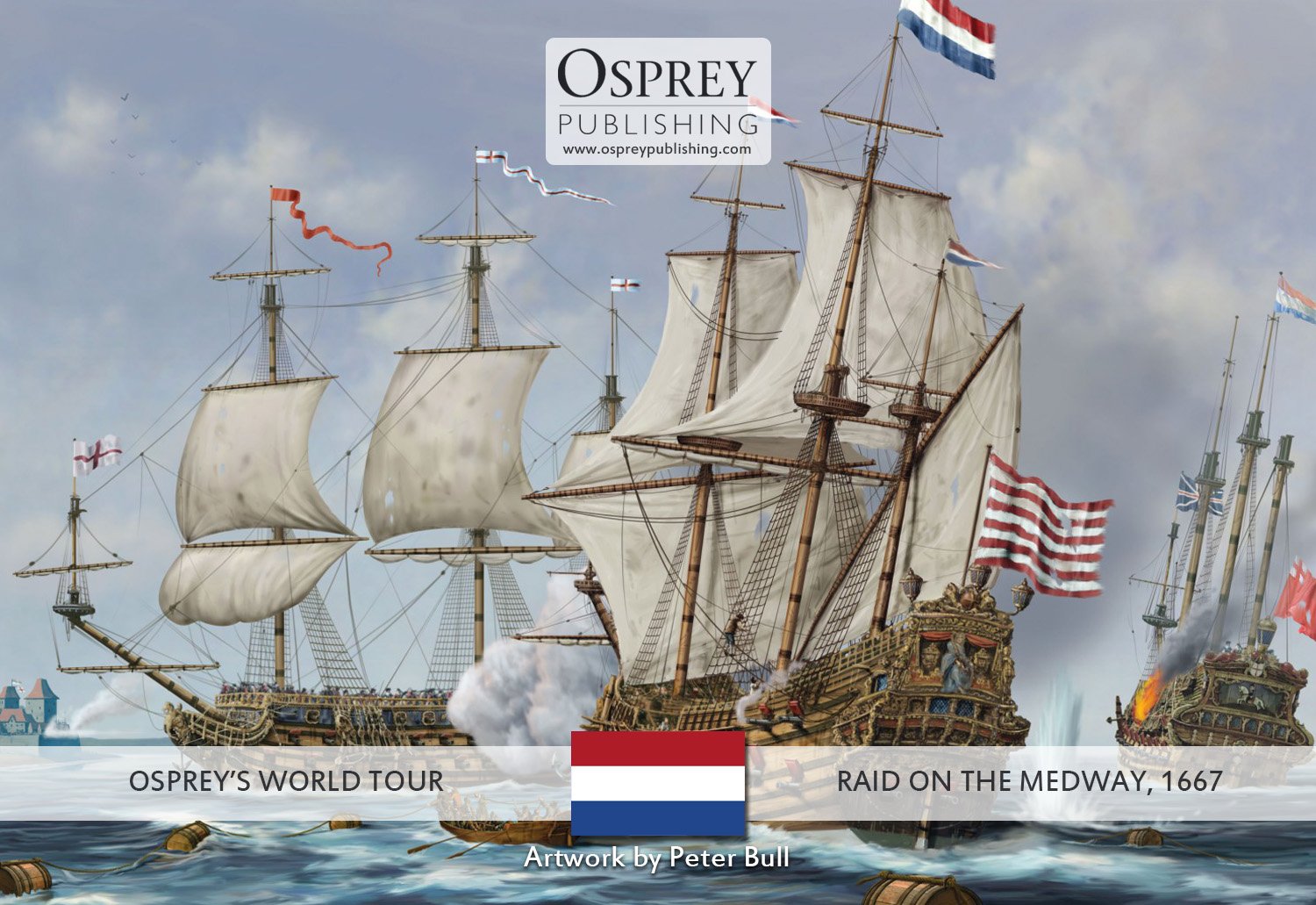Osprey's World Tour sees us delving into our extensive backlist of books as we explore the globe through military history.
Today Osprey's World Tour is taking us to the Netherlands, once one of Europe's naval superpowers. The illustration chosen reflects the nation's maritime history, with a piece of artwork drawn from New Vanguard 183: Warships of the Anglo-Dutch Wars 1652–74. It depicts naval combat at the Raid on the Medway, 1667.
Raid on the Medway, 1667
Extract taken from New Vanguard 183: Warships of the Anglo-Dutch Wars 1652–74 by Angus Konstam
The foundations for the spectacular Dutch raid on the main English fleet anchorage in the River Medway were laid by Charles II. The extravagant expenditure of the King and his court had all but bankrupted the country, and so to save money the bulk of the fleet was placed in reserve during 1667. Instead the English relied on their coastal defences to keep the enemy at bay. The Medway was actually poorly defended, with just one fort at Sheerness guarding the mouth of the river, and a boom and a handful of gun batteries protecting the main anchorage further upstream. On 10 June the Dutch stormed and captured the fort at Sheerness, and the following day the fleet entered the river. On the morning of 12 June they broke the boom and negotiated the line of hastily sunk blockships. The English fleet was trapped and helpless, and the following day the Dutch arrived off Chatham, and burned or forced aground several major warships before departing for Holland, with the captured Royal Charles in tow. It was a humiliating blow for the Restoration navy, and it forced Charles II to sign an unfavourable peace treaty with the victors. This plate shows the moment when the 36-gun Dutch warship Vrede from the Amsterdam Admiralty broke the boom. Beyond her lay the 42-gun Fourth Rate HMS Unity (formerly the Eendracht), which had been captured from the Dutch in 1665. The English warship was brushed aside, and forced to flee upriver to avoid the Dutch fireships that followed astern of the Vrede. She was captured the following day.
Further Reading
If you would like to read more about Dutch military history then these books could be just for you!
Men-at-Arms 371: Wellington's Dutch Allies 1815
Men-at-Arms 493: Hitler's Blitzkrieg Enemies 1940
Campaign 270: Operation Market-Garden 1944 (1)
Fortress 89: The Atlantic Wall (2)
New Vanguard 183: Warships of the Anglo-Dutch Wars 1652–74
Is there a certain period of Dutch military history that really floats your boat? Let us know in the comments section.


Comments
You must be logged in to comment on this post. Click here to log in.
Submit your comment